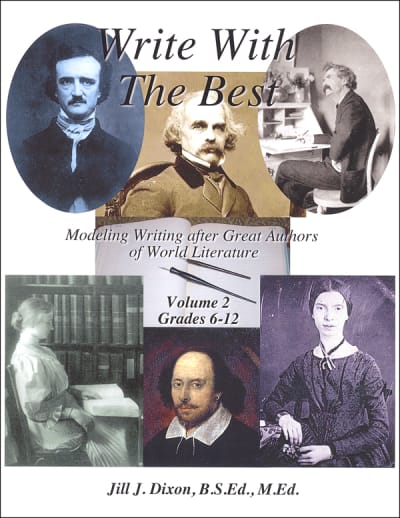If you’re learning to write, why not learn from the best?
This great concept is well-implemented in the Write with the Best writing
program by Jill J. Dixon, B.S. Ed., M.Ed.
Focusing on descriptive writing in Volume 1, the
author has chosen some of the best literary passages for use as nine models.
Models include excerpts from great literature such as A Christmas Carol,
Robinson Crusoe, and Wind in the Willows. Each model is broken
into ten 15-to-45-minute daily lessons which include a good amount of grammar
(parts of speech) instruction, and some mechanics; has the student find
another good example of the genre being studied (and doing some comparative
grammatical analysis); and culminates with student writing and proofreading.
Every unit also includes a dictation exercise from the
included (or another) classic excerpt. The student is then to check his result
against the written copy. Units are systematic, instruction is clear, and the
whole course is well-organized and ready to pick up and go. A “How to Write
Guide” for the teacher and student takes you through the steps for each type of
writing. A proofreading checklist is included to encourage and aid in
self-editing. For the parent there is a helpful sheet on grading criteria.
Volume 2 follows the same thorough format, focusing
on expository, persuasive, and literary writing. Eight units cover twelve
writing categories, with examples from great writers. It has a larger answer
key and contains proofreading checklists for each genre. Literature excerpts
are included in the volumes, but each student will need a dictionary and
thesaurus; a grammar handbook would also be helpful.
Permission to reproduce is given for the excerpts and the
proofreading checklist. These are the only consumable components, and each
student will need his own. All in all, this program looks like a
well-organized, easy to use, effective writing program that I'm personally
eager to try!

